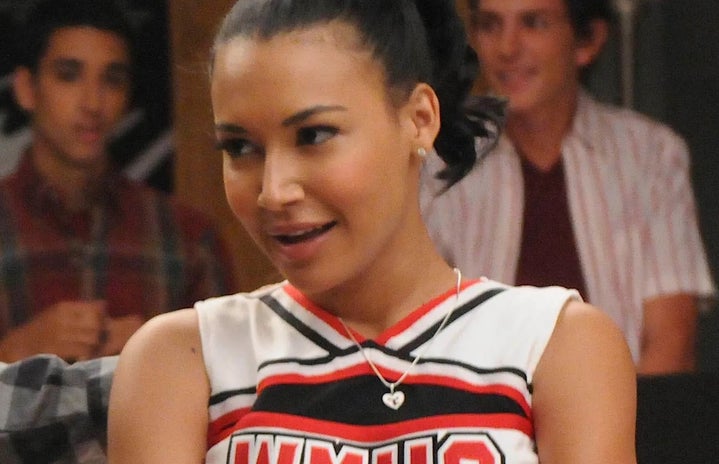The 1999 film Boys Don’t Cry became a hit with rave reviews during a time when transgender characters were not frequently showcased in film and television, and LGBT representation barely existed in mainstream media. The film is based on the true story of the 1993 murder of Brandon Teena, Lisa Lambert and Philip DeVine in Humboldt, Nebraska. The triple homicide amassed national attention, and offensive headlines like “Cross-Dresser Killed Two Weeks After Town Learned Her True Identity” covered newspapers across the country.
While Boys Don’t Cry is based upon the murder of these three victims, Philip DeVine, a Black man, is not a part of the movie. Commenting on this erasure in the 2020 Netflix documentary Disclosure, media maker and writer Tiq Milan referred to this as the “erasure of Black people.” “So it’s like you can’t have, like, queer trans people and Blackness in the same place at the same time,” he said.
Representation in entertainment media is gradually improving, but this progress is slow and often misguided. Although representation may exist, it isn’t always positive or even accurate, and may still be upsetting to those being represented.
The TV landscape may currently appear to represent the LGBTQ+ community well, but the media underrepresents LGBTQ+ people of color in comparison to their actual population.
It’s been proven that representation helps to oppose stereotypes and ignorance. A 2015 study by ResearchGate found that the more cis people are exposed to gay characters on TV, the more accepting they became of gay equality. Additionally, a GLAAD and P&G 2020 survey found that 80% of respondents who were exposed to LGBTQ+ people in the media were more supportive of equal rights for LGBTQ+ people compared to 70% of respondents who hadn’t seen LGBTQ+ people in the media.
The TV landscape may currently appear to represent the LGBTQ+ community well. In 2018, a study by Gallup estimated that lesbian, gay, bisexual, and transgender people comprised about 4.5% of the U.S. population, but they accounted for 6.7% of the top 10 recurring cast members in the top 300 programs on broadcast, cable and streaming platforms in 2019. Additionally, 26% of the top 300 programs had at least one cast member who identified as LGBTQ+. Despite this, however, there is still a need for greater diversity — the portrayal of LGBTQ+ characters in American media overwhelmingly hinges on the white LGBTQ+ experience, as the media underrepresents LGBTQ+ people of color in comparison to their actual population.
According to NBC News, white LGBTQ+ individuals are most represented on screen, but women of color and Latinx LGBTQ+ people are underrepresented compared to their population estimates. GLAAD reported that in 2019, only 34% of LGBTQ+ characters in films were people of color, compared to 42% in 2018 and 57% in 2017. Additionally, of the 50 characters accounted for in 2019, 33 were white (66%), 11 were Black (22%), four were Latinx (8%) and only two were Asian/Pacific Islander (4%).
Inviting LGBTQ+ women, Latinx, and other underrepresented members of the LGBTQ+ community to share their stories will shift the mainstream white, queer narrative.
While it is commendable that there is more LGBTQ+ representation on our screens, having more characters of color should be the film industry’s next priority. While the media may subconsciously construct the perceptions of cis and straight audience members about the LGBTQ+ community, LGBTQ+ individuals also use the media to mold their identities.
Jack Moore, a writer and co-showrunner of Netflix’s Dear White People who also identifies as bisexual, commented to NBC News that to diversify LGBTQ+ storytelling, writers’ rooms must diversify as well. According to a 2019 Think Tank for Inclusion and Equity (TTIE) survey, which included 282 writers who identified as female and non-binary, people of color, LGBTQ+, and/or people with disabilities, diverse writers are frequently excluded in writers’ rooms with little power to offer changes, qualified but not promoted to higher positions, and more likely to endure bias or harassment. Additionally, the survey found that 42% of the writers joined the industry as a “diversity slot” hire, 73% had to repeat a title at least once, 58% of respondents were pitched to shows by their agents by spotlighting their “otherness,” and 64% have endured some form of discrimination or harassment. Inviting and permitting LGBTQ+ women, Latinx, and other underrepresented members of the LGBTQ+ community to share their stories will shift the mainstream white, queer narrative.
Having an LGBTQ+ character of color often creates a multi-faceted “otherness” not commonly portrayed on television. When an LGBTQ+ character of color is depicted, they are usually either utilized as a plot device or depicted as a stereotype or cliche. In Glee, Santana Lopez, who identified as both Latina and lesbian, was often fetishized and over-sexualized. Additionally, the character of Blaine was portrayed by actor Darren Criss, who is half-Asian, but Blaine’s Asian heritage is never acknowledged during the series. The character of Callie Torres on ABC’s Grey’s Anatomy was one of the first bisexual Latina characters on mainstream television. However, she was painted as a “slut,” and this Latina stereotype played a large part in her being used as a plot device.
While this Hollywood trend seemingly increases LGBTQ+ representation on TV, it only provides a single, sanitized story of the LGBTQ+ experience.
Non-white characters are often represented as “race-neutral.” On ABC’s GRΣΣK, Calvin Owens is an openly gay man and many of his plotlines and struggles hinge on his LGBTQ+ identification. However, although he is African-American, it’s never acknowledged on the show.
According to Television & New Media, there’s been a cultural shift in film and television from white, gay men being portrayed as non-monogomous and sex-hungry, originating from the AIDS epidemic, to acting similarly to cis men as seen in shows like ABC’s Modern Family. On the show, Cameron and Mitchell, a white gay couple, both have stable jobs, a loving marriage and a daughter. They fit the “ideal” American image, which caters to — and makes them more palatable to — straight audiences. While this Hollywood trend seemingly increases LGBTQ+ representation on TV, it only provides a single, sanitized story of the LGBTQ+ experience while neglecting other aspects of identity like race or ethnicity.
There have been some more recent shows bucking this trend, however. ABC’s The Fosters portrayed a family of one biological child, two adopted children, and two foster children with two lesbian moms in an interracial relationship. Two of the children were Latino and Latina, and their struggles and storylines are related to that. The couple also acknowledged their races in addition to their LGBTQ+ storylines. Netflix’s One Day at a Time had a Latina lesbian who had numerous storylines that do not focus on her sexuality.
The need for racial diversity in the LGBTQ+ community deserves more attention. The media should make more of an effort to depict more racial diversity in its portrayals of LGBTQ+ characters and stories. Depicting these characters with different professions and lifestyles too will remove the sole focus from their sexual preference or race, and would exemplify the complexity of these characters as they would with other straight or white characters. Not only is it vital to depict more LGBTQ+ characters of color, but writers’ rooms must also have more diversity to ensure that these characters are being accurately and appropriately depicted. If you want to do your part to help fight for better LGBTQ+ representation in the media, you can donate to organizations like GLAAD who fight to defend the LGBTQ+ community in the film and television industry.


